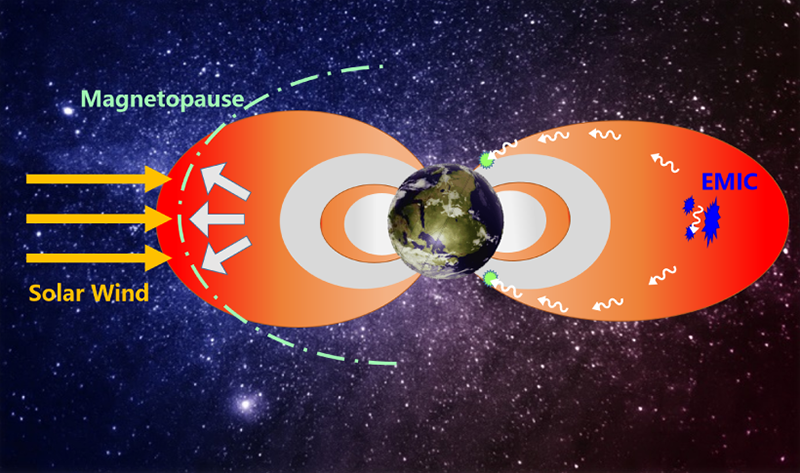Source: Journal of Geophysical Research: Space Physics
The Van Allen belts are massive, donut-shaped rings of radiation that encircle Earth, extending up to 58,000 kilometers into space. Held in place by Earth’s magnetic field, the belts shrink and expand as electrons get knocked between belts, down into the atmosphere, or out into space.
Now, a new study examines how forces such as solar wind and magnetic storms drive this particle loss by analyzing three separate “dropout events” in which there was a sudden loss of electrons in the outermost belt. Understanding why such events happen is important because radiation within the belts can interfere with communications systems and damage satellites.
Discovered in 1958, the Van Allen belts have long flummoxed scientists with their tendency to grow, shrink, and change over short time periods. In 2012, two satellites called the Van Allen Probes were launched to gather data on the belts and have shown that the density of high-energy, ultrafast electrons within the outermost belt can drop by several orders of magnitude within just a few hours. In the new study, Xiang et al. use data gathered during three geomagnetic storms—periods when solar winds, flares, or other magnetic forces disrupt Earth’s magnetosphere—to tease apart different mechanisms that contribute to these rapid fluctuations.

Two distinct mechanisms played a role in freeing the trapped electrons, the researchers found. In some storms, the most important mechanism was magnetopause shadowing, in which a gust of solar wind or a solar flare temporarily changes the shape of the radiation belt. This interferes with the particles’ typical drift around the planet and tends to force electrons outward, toward space. In other storms, waves of energy generated by plasma within the magnetosphere scattered electrons, causing them to spin and bounce. Many of these electrons were forced down into the atmosphere.
In the future, the team hopes to determine what percentage of dropout events is caused by magnetopause shadowing versus plasma-generated waves, information that could help researchers predict when it is safe to launch satellites and other spacecraft. (Journal of Geophysical Research: Space Physics, https://doi.org/10.1002/2017JA024487, 2017)
—Emily Underwood, Freelance Writer
Citation:
Underwood, E. (2017), How Earth’s outer radiation belts lose their electrons, Eos, 98, https://doi.org/10.1029/2017EO083143. Published on 17 October 2017.
Text © 2017. The authors. CC BY-NC-ND 3.0
Except where otherwise noted, images are subject to copyright. Any reuse without express permission from the copyright owner is prohibited.

